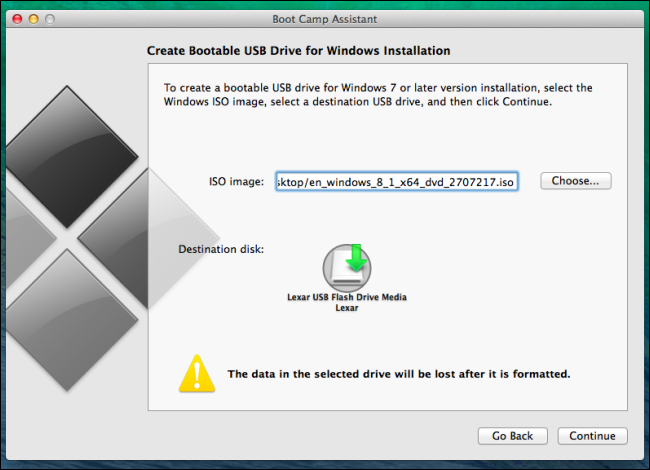We previously showed you how to create a Windows 10 USB installation media when performing a clean install of Windows 10, but there might be an instance where the only machine you have available is a Mac. We'll show you to create a bootable USB flash drive with the Windows 10 installer from a Mac. It's easier than you think, thanks to the built-in Boot Camp Assistant from Apple.
Create Bootable USB Installer for macOS Mojave. When it comes to creating bootable installer, the process is assumed to be tough enough. With the right tools and on the path, you’ll be able to do it even if you are beginner. Method #3: Create Bootable Windows 10 USB on Mac using Terminal Step 1. Open the 'Finder' option then 'Terminal' app. Let's say your USB drive is 'disk 2', so first we will have to format it in. By entering this, the app will format the USB drive and name t 'WINDOWS10'.
Download Windows 10 Disc Image
Install Windows Usb Mac
- Oct 01, 2013 Maybe you’ve decided to install Windows 8.1 on Mac without Boot Camp; or maybe your PC is unbootable and you want to prepare a bootable USB using the ISO file that you have on your external hard drive; or you want to easily create bootable Windows 8.1 USB without installing new tools.
- Now Create bootable USB for Mac OS El Capitan on Windows Now it is the time to create a bootable USB installer using TransMac, To install Mac OS El Capitan on VirtualBox on Windows 10 you need a Bootable USB here you will learn the steps of creating a bootable USB installer for Mac OS El Capitan on Windows.
- In order to make bootable USB of macOS high Sierra, you will need an 8gb or higher USB 2.0 or USB 3.0 drive. Note: By using USB 3.0 you might face some issues while booting into the installer, in that case, please try using USB 2.0 drive.
First, you need to download the Windows 10 ISO file. Go to the download page and select the proper edition of Windows 10 in the dropdown menu. If you don't know what K, KN, or Single Language edition stands for, just select Windows 10 in the list.
Create Bootable Usb For Mac On Windows 7
Create USB installer with Boot Camp Assistant
After downloading the ISO file, you'll need to use Boot Camp Assistant to move it to a bootable USB drive.
Create Bootable Usb Drive For Mac On Windows

- Insert a USB flash drive to your Mac. Make sure it's at least 8GB, which is usually marked on the USB stick. You can also check by right-clicking the USB drive on your desktop and clicking Get Info. Check if the number next to Capacity is at least 8GB. All the files in the drive will be deleted, so make sure there are no important documents inside.
- Open Boot Camp Assistant. The easiest way to launch it is through Spotlight Search, which you can bring up by pressing Command and Spacebar. Press Enter to launch the app.
- Check the box for 'Create a Windows 7 or later version install disk' and deselect 'Install Windows 7 or later version.'
Click Continue to proceed.
Boot Camp Assistant will automatically locate the ISO file from your downloads folder, but make sure it is the right file. Click the 'Choose…' button and locate the ISO file. Make sure the destination disk is the USB thumb drive you've inserted.
Click Continue. It can take about 20 minutes to format and set up the USB installer on the Mac.
When Boot Camp Assistant is done, the USB drive will be renamed to WININSTALL. Click Quit to close the app and then Eject the USB drive.
That's it! You now have a bootable USB drive with the Windows 10 installer. You can use it to configure new Windows 10 PCs from scratch. We told you it was easy!
Have you tried creating a Windows 10 installer USB drive from a Mac before? Did you encounter any issues? Let us know your experience in the comments!
We may earn a commission for purchases using our links. Learn more.
X marks the spot
You can get a Surface Pro X from Microsoft starting today
Create Bootable Ubuntu Usb For Mac On Windows
Microsoft's Surface Pro X is now on sale. It's the thinnest and lightest Surface Pro ever, and it's powered by a custom ARM processor.